SailGP: Risks require greater penalties
Published on April 28th, 2021
When Russell Coutts and Larry Ellison established SailGP in 2018, it was the product of their America’s Cup experience.
Without the limitations within the Deed of Gift, they could create an annual, global sports league featuring fan-centric inshore racing in some of the iconic harbors around the globe. They could form long-term broadcast agreements, and select the teams to sail their identical F50 catamarans.
While the carrot for the competitors was the $1 million prize at the end of the season, the big picture was to build a watchable, commercially-viable entertainment property rooted in high speed action. And for the season two opener in Bermuda (April 23, 25), with winds at the upper end of the range, there was plenty of action.
Coutts was clearly pleased with what he saw on the final day. “Spithill and Outteridge big crash today! But what a race day … tactical, drama, and excitement. Just great racing!” he said on Facebook, with comments of support flowing down the page:
“Very exciting, have rerun all the races, amazing starts, and speed, not boring.”
“Truly edge of the seat racing. Good work!”
“Best day of sailboat racing I’ve watched in a long, LONG time.”
“More exciting than the Americas Cup.”
This balls to the wall format of eight boats flying around the course was bound to have some NASCAR moments where crashes occur, and Bermuda delivered that too. But unlike the sport of sailing that provides redress when “a boat’s score or place in a race or series has been or may be, through no fault of her own, made significantly worse…”, SailGP has no such consideration.
Crash or be crashed, you lose, so when the Japan SailGP Team rammed the United States SailGP Team in the first race on the final day, it ended the event for both teams. With no redress, they dropped down the standing to last and second to last.
“That’s how it goes,” said US helm Jimmy Spithill afterward. “This is almost like auto racing now.” And while SailGP has modified the boats to make them even faster than the first season, the US team coach Philippe Presti is worried about taking it too far.
“I think we’re probably going to have to put the handbrake on a bit, think about establishing rules that discourage boats from getting so close to each other,” said Presti in an interview with Voiles et Voiliers.
“You have to remember that the training times are very short before each Grand Prix and the crews find themselves in situations where you have to adapt very quickly. I think you will have to find the right balance between control and grip of risk, because at these speeds, the impacts can be very violent and cause great damage, including humans.
“In the first season of the circuit, there were six boats with relatively disparate levels, which made the fleet spread out quite quickly. This is no longer the reality today. There is clearly a tightening of the levels.
“It’s a pretty incredible show and the feedback is really positive, but I don’t think we should focus on the incidents. I think it would be a mistake of the organization to focus attention on capsizes or crashes because at the end of the day what the riders want is to race. I think we will have to work on the security aspects, lower the level of dangerousness a little.
“For example, in the last America’s Cup, we had a safe area around the boats that we were penalized for if we entered. I think we clearly need to put some distance between the boats on the SailGP circuit today. When I see the Spanish start against the French in the second race of the second day, it is not acceptable. There really is a way to hurt people by forcing through in this way.
“It could have ended badly for us too. We did not see it, in which case we would have tried to avoid it, made sure not to crash. In short, I think we will need new rules to force the crews to put a little distance between the boats. The penalty system is not enough of a deterrent in my opinion. There is not enough to lose when you take risks.”
SailGP details – Crews list – Results – How to watch – Facebook
Format for SailGP events:
• Each event runs across two days.
• There are three races on each day, totaling six races at each event.
• The opening five fleet races involve every team.
• The final match race pits the three highest ranking teams against each other to be crowned event champion.
• The season ends with the Grand Final, which includes the Championship Final Race – a winner-takes-all match race for the $1m prize.
SailGP Season 2 Schedule*
April 24-25, 2021 – Bermuda Grand Prix
June 5-6, 2021 – Italy Grand Prix – Taranto
July 17-18, 2021 – Great Britain Grand Prix – Plymouth
August 20-21, 2021 – ROCKWOOL Denmark Grand Prix – Aarhus
September 11-12, 2021 – France Grand Prix – Saint-Tropez
October 9-10, 2021 – Spain Grand Prix – Andalusia
January 29-30, 2022 – New Zealand Grand Prix – Christchurch
March 26-27, 2022 – United States Grand Prix – San Francisco (Season 2 Grand Final)
*Subject to change
2021-22 Teams
Australia, Tom Slingsby
Denmark, Nicolai Sehested
France, Billy Besson
Great Britain, Ben Ainslie
Japan, Nathan Outteridge
New Zealand, Peter Burling
Spain, Jordi Xammar/ Phil Robertson*
United States, Jimmy Spithill
*Season 1 skipper Phil Robertson (NZL) will helm in an interim capacity while Jordi Xammar prepares for the Tokyo 2020 Olympics.
Established in 2018, SailGP seeks to be an annual, global sports league featuring fan-centric inshore racing in some of the iconic harbors around the globe. Rival national teams compete in identical F50 catamarans with the season culminating with a $1 million winner-takes-all match race.




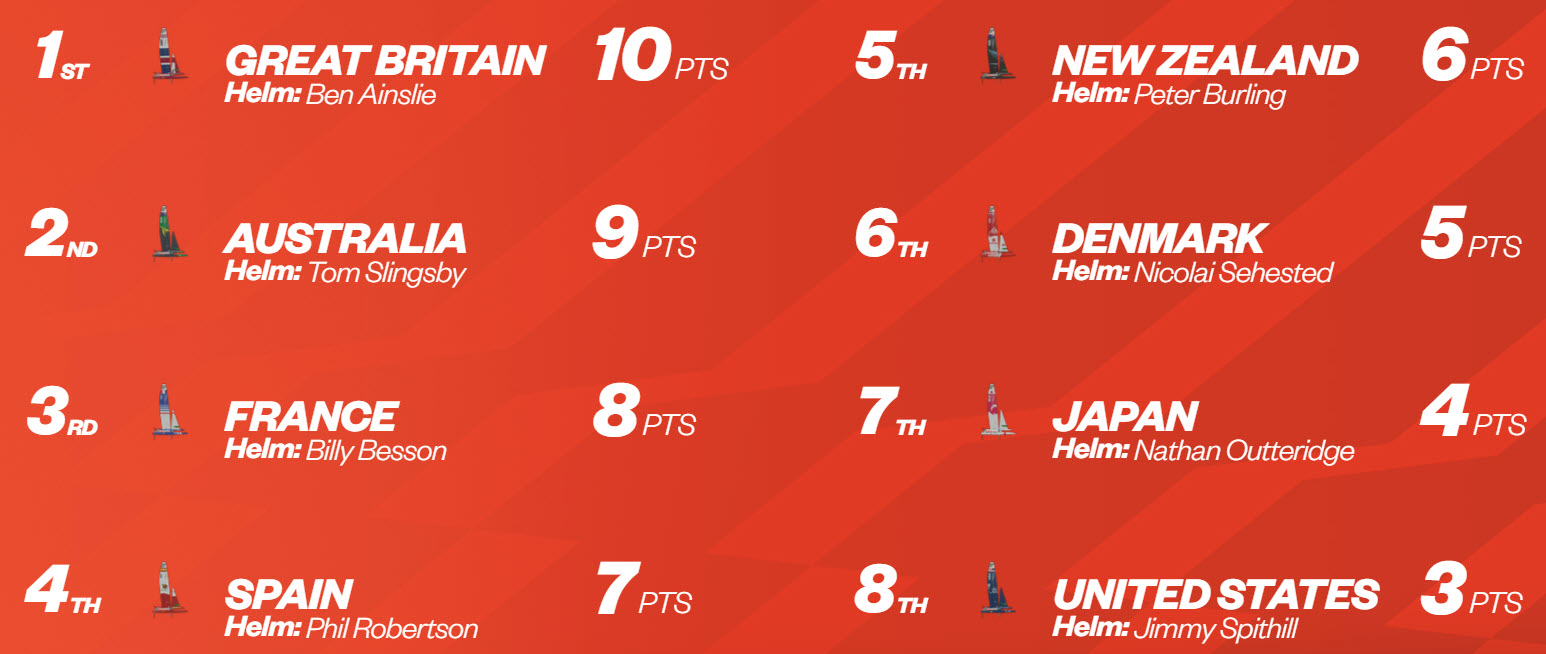

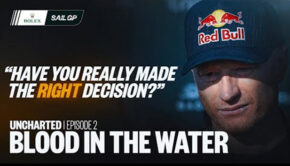
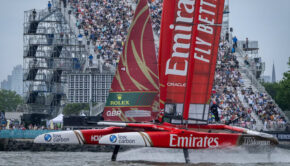
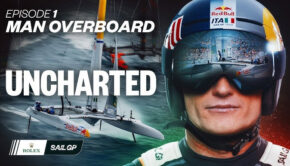
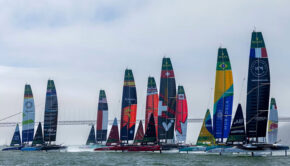
 We’ll keep your information safe.
We’ll keep your information safe.